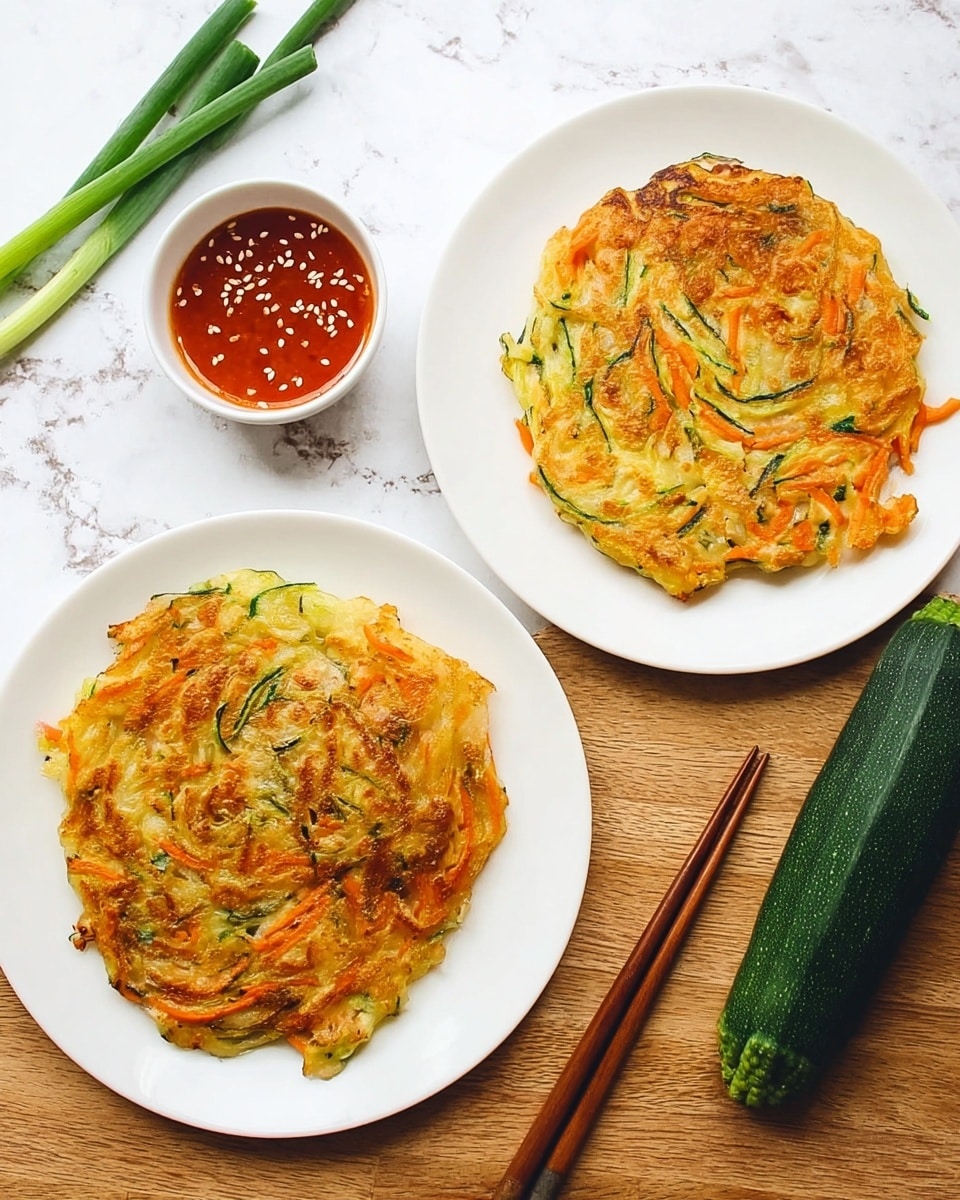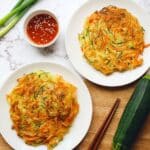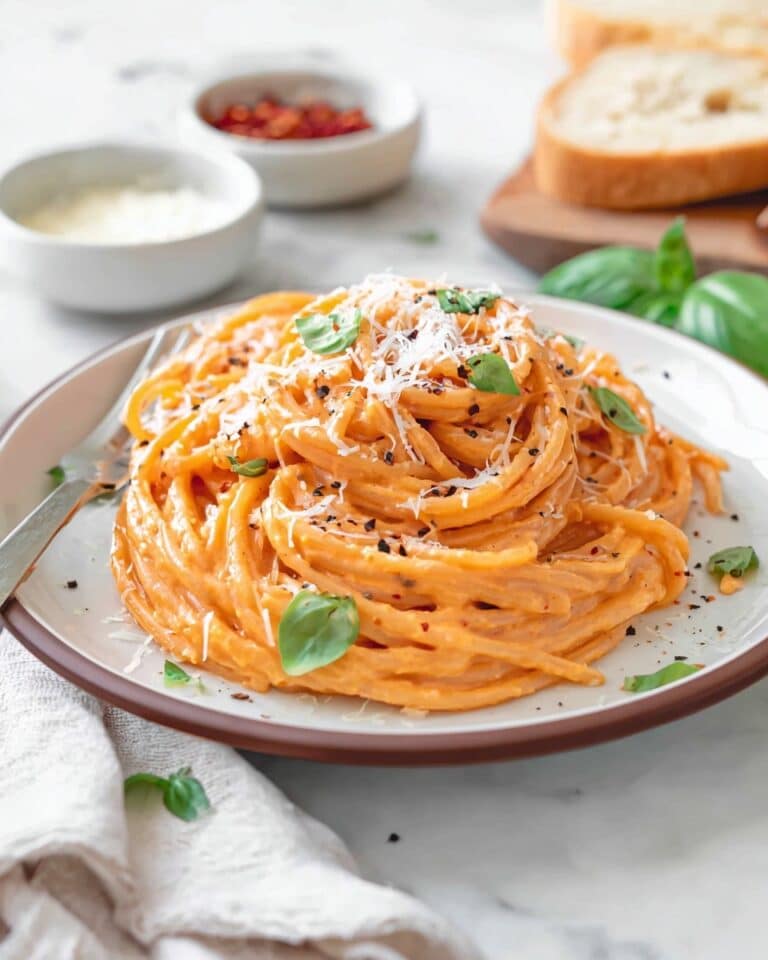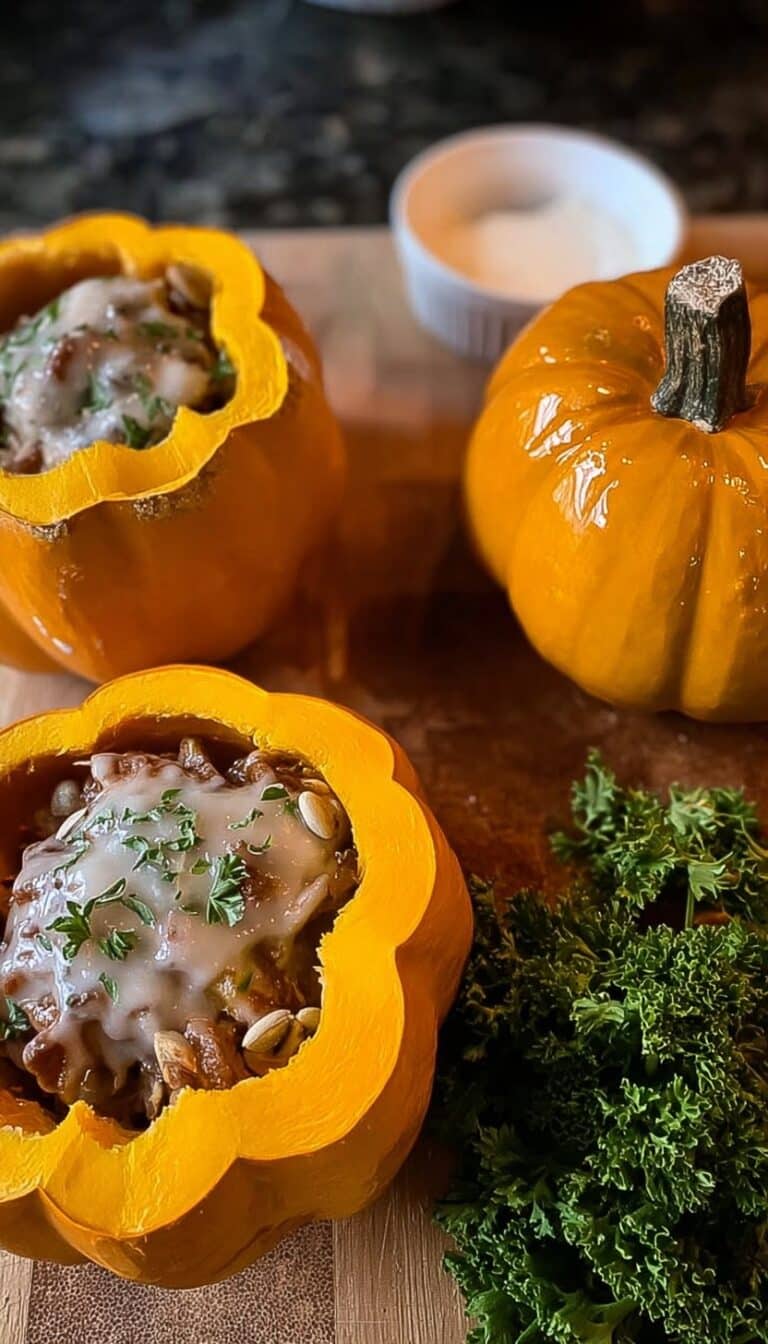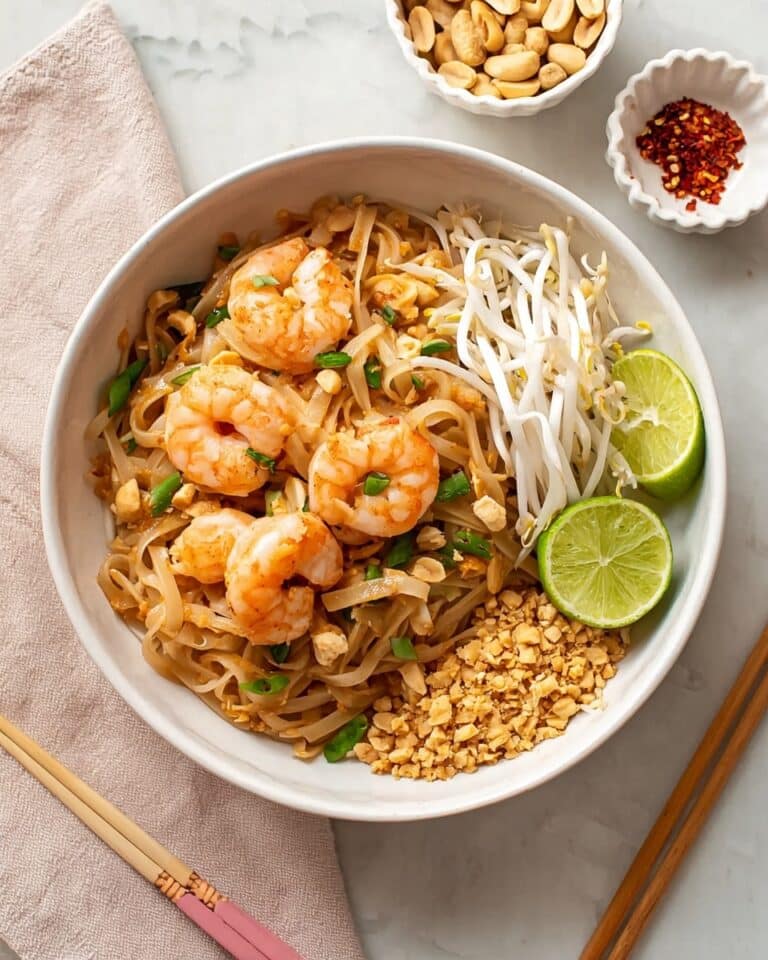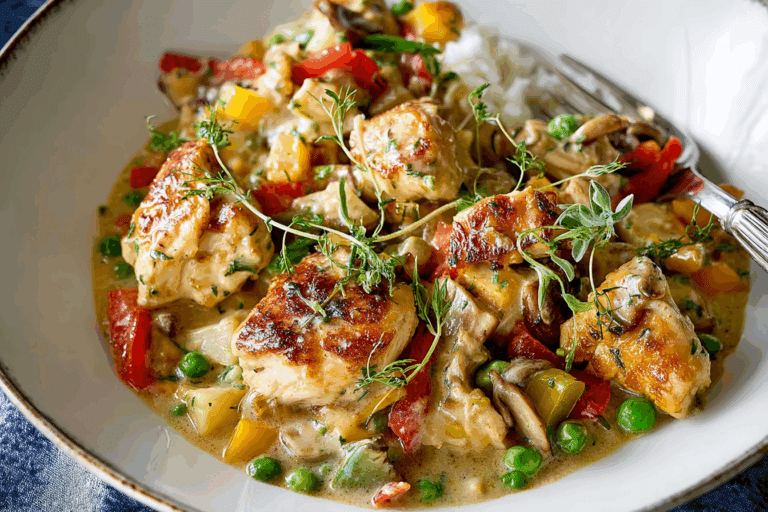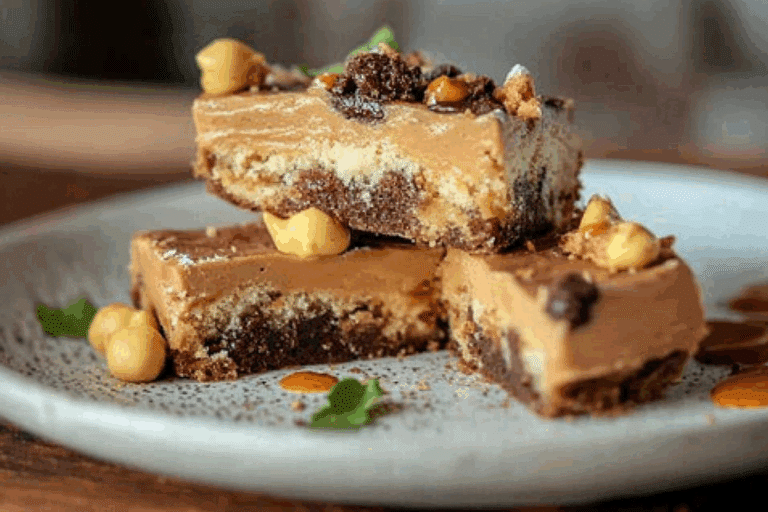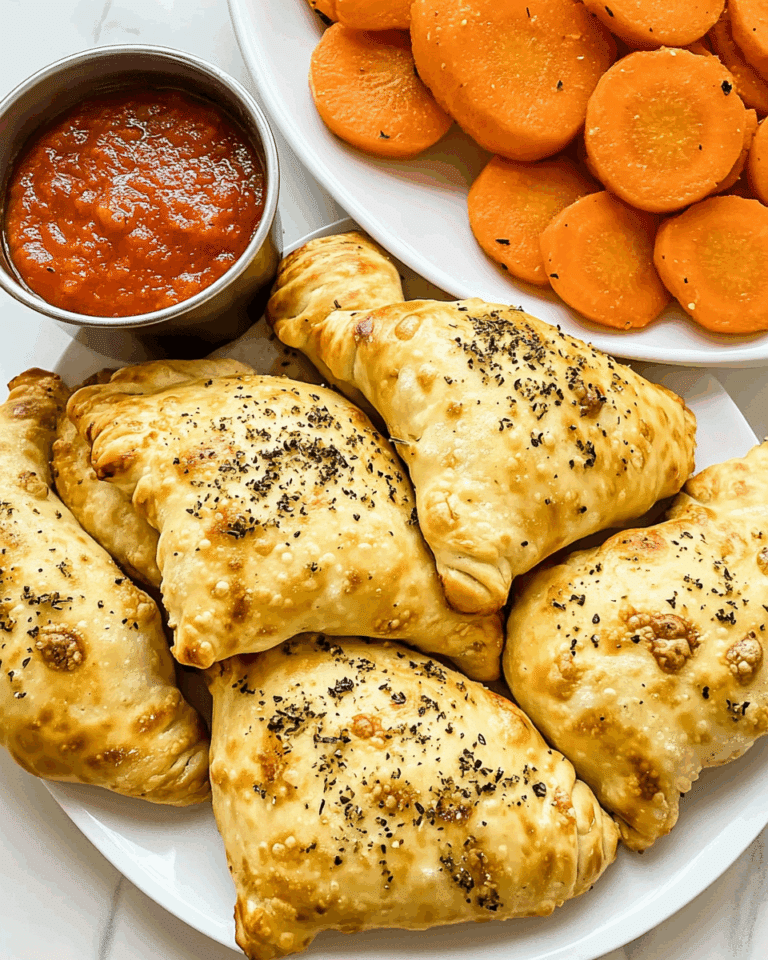Vegan Yachaejeon (Korean Vegetable Pancakes) Recipe
I’m so excited to share this Vegan Yachaejeon (Korean Vegetable Pancakes) Recipe with you! These crispy, golden pancakes are not just a delicious comfort food—they’re also super versatile and packed with vibrant veggies. Whenever I make them, from busy weeknights to casual weekend brunches, the whole kitchen fills with this wonderful, inviting aroma that just makes everyone gather around.
What I love most about this Vegan Yachaejeon recipe is how effortlessly it combines wholesome ingredients into something that feels indulgent but stays light. Plus, it’s gluten-flexible with the right flour substitution, so you can make it your own. If you’ve been curious about Korean cuisine or just want a plant-based snack or meal that comes together quickly, this recipe is going to be your new favorite go-to.
Ingredients You’ll Need
These ingredients come together beautifully for a pancake that’s crispy on the outside, tender on the inside, and full of fresh veggie goodness. I always recommend picking fresh, firm vegetables to keep the pancakes from getting soggy.
- All purpose flour: This is the classic base, but if you want gluten-free, try a 1-to-1 gluten-free blend with good baking properties.
- Baking powder: A little lift for that perfect lightness and fluff in the pancake.
- Corn starch or potato starch: This helps crisp the edges and adds a nice texture contrast.
- Salt or black salt: Black salt gives a subtle “eggy” flavor if you want that depth, but regular salt works great too.
- Turmeric powder (optional): Just a pinch brightens the color and adds a gentle warmth, but it’s totally optional.
- Room temperature water: Helps form the batter. Adjust the amount to get a pancake batter consistency — not too thick, not too runny!
- Zucchini: I slice it into match sticks so every bite has a satisfying crunch and freshness.
- Sweet potato: Raw shredded or match sticks add a lovely sweetness and texture.
- Carrot: Adds a pop of color and natural sweetness, also sliced match stick style or shredded.
- Onion: Thinly sliced for a mild kick that complements all other veggies beautifully.
- Green chili or jalapeño (optional): If you like things spicy, toss some in for heat and extra zing.
- Scallions/green onions: The fresh, slightly pungent scallions are a must-have to brighten up the whole dish.
- Other vegetables of choice: Feel free to get creative here! Bell peppers, mushrooms, or even spinach work well.
Variations
I like to switch things up depending on what’s in my fridge or the season—it’s honestly so forgiving. You’ll find you can make Vegan Yachaejeon (Korean Vegetable Pancakes) Recipe your own by tweaking veggies or spices.
- Spicy version: Adding chopped kimchi or gochugaru (Korean chili flakes) gives a lively kick. I tried this once with kimchi and loved the tangy flare!
- Gluten-free: Substitute the all purpose flour with chickpea flour or a gluten-free baking mix for a different texture but equally delicious results.
- Seasonal veggies: In the fall, I add shredded pumpkin or butternut squash for a sweet twist.
- Thicker style: For heartier pancakes, add a bit more flour or reduce water slightly to get a thick batter that holds together well.
- Herbs: Fresh herbs like cilantro or parsley make a fresh, bright difference if you want a more Mediterranean vibe.
How to Make Vegan Yachaejeon (Korean Vegetable Pancakes) Recipe
Step 1: Prep Your Veggies Like a Pro
Start by washing and slicing your vegetables. I like using match sticks or shredding for the sweet potatoes and carrots—that way, they cook evenly and integrate perfectly in the batter. Don’t forget to thinly slice onions and scallions for a delightful texture contrast. Keep the sizes consistent for uniform cooking and ease of flipping later.
Step 2: Mix the Dry Ingredients
Combine the flour, baking powder, corn starch, salt, and turmeric in a bowl. Mixing the dry ingredients well is key for even flavor and texture. Sometimes I sprinkle in black salt for that signature egg-like taste, but regular salt works perfectly too.
Step 3: Add Water and Create the Batter
Gradually pour in the room temperature water, whisking as you go until you get a smooth, pancake-batter consistency. It shouldn’t be watery but easy to spread—aim for something like slightly thick cream. If it’s too thick, add a teaspoon of water at a time. This step often decides the crispiness, so take your time.
Step 4: Fold in the Vegetables
Now, gently fold in all your prepared veggies until they’re evenly coated in the batter. Be careful not to overmix or mash the veggies—you want them distinct so the texture shines through. This mix of colors at this point is one of my favorite parts; it’s like painting with food.
Step 5: Cook Until Golden and Crisp
Heat a non-stick or cast-iron pan over medium-high heat and add a bit of oil (I prefer neutral oils like grapeseed or sunflower for their high smoke points). Pour spoonfuls of batter into the pan, spreading gently with the back of the spoon. Cook about 3-4 minutes on each side, until golden brown and crispy. Don’t flip too early—when the edges lift easily, it’s time to turn!
How to Serve Vegan Yachaejeon (Korean Vegetable Pancakes) Recipe
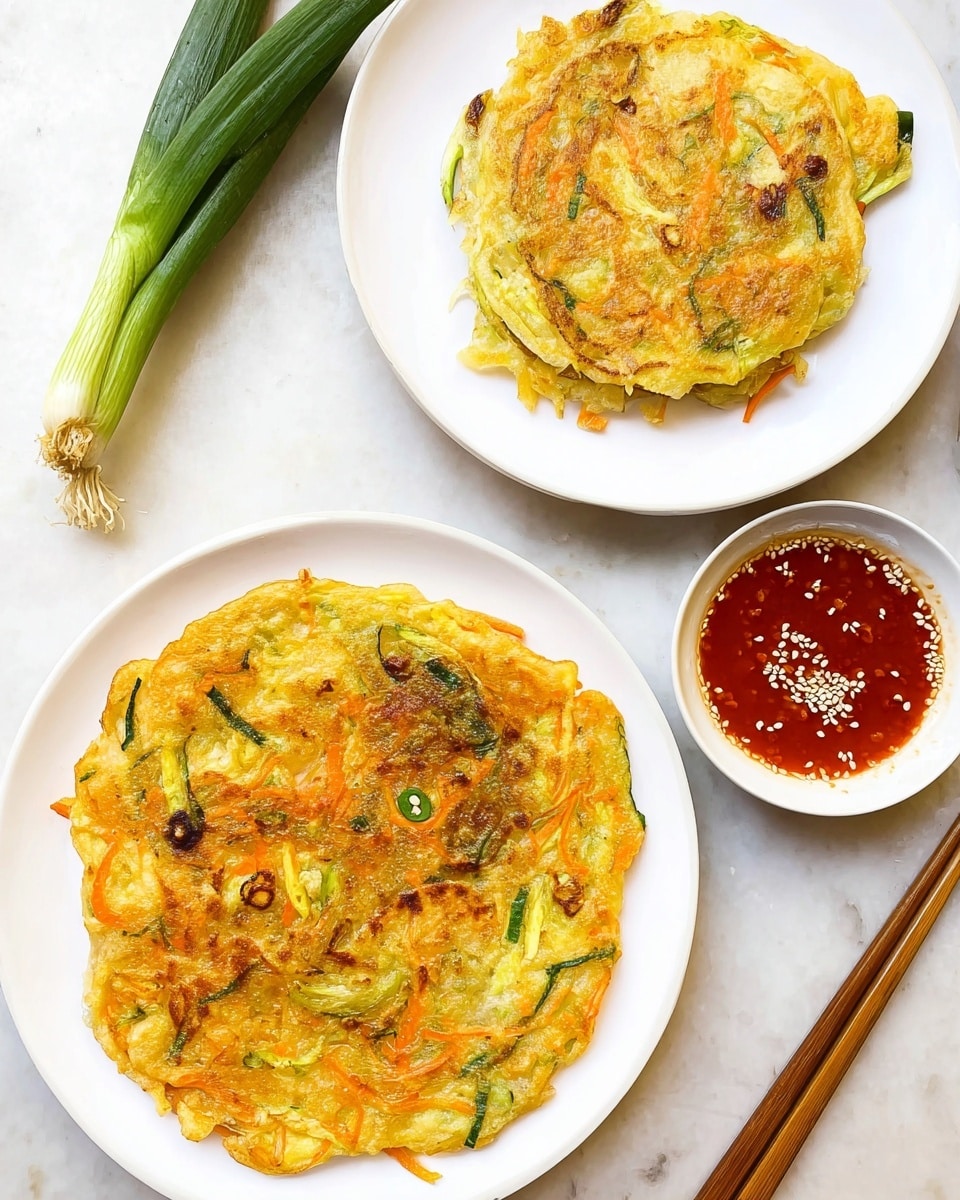
Garnishes
I love sprinkling sesame seeds and finely chopped scallions on top for a little extra crunch and color. Sometimes a drizzle of toasted sesame oil right after cooking adds amazing aroma. A wedge of lemon or lime on the side also brightens the whole dish wonderfully.
Side Dishes
These pancakes pair beautifully with classic Korean sides like kimchi or a simple soy dipping sauce. I often whip up a quick dipping sauce with soy sauce, rice vinegar, a splash of maple syrup, and chili flakes—that sweet-sour-spicy combo is irresistible.
Creative Ways to Present
For special occasions, I arrange the pancakes stacked with layers of dipping sauce in between, almost like little savory cakes. Garnishing with vibrant edible flowers or microgreens takes it up a notch visually and taste-wise. It never fails to impress guests!
Make Ahead and Storage
Storing Leftovers
I store leftover Vegan Yachaejeon in an airtight container lined with paper towels to soak up moisture, keeping the pancakes crisp longer. They’re best eaten within 2 days, but I have saved them for up to 3 days without losing too much texture.
Freezing
Freezing works pretty well here. I lay the pancakes flat on a baking sheet lined with parchment, freeze until solid, then transfer to a freezer bag. This way, they don’t clump together, and you can pull out just what you need. Frozen pancakes keep up to 2 months.
Reheating
To reheat, I find the pan-fry method is best—just a quick warm-up on medium heat with a tiny touch of oil. This crisps them back up wonderfully, unlike microwaving, which tends to make them soggy. If in a pinch, the toaster oven works pretty well too.
FAQs
-
Can I use different vegetables in the Vegan Yachaejeon (Korean Vegetable Pancakes) Recipe?
Absolutely! Yachaejeon is super flexible. You can swap in whatever veggies you have on hand—bell peppers, mushrooms, spinach, or even broccoli work great. Just make sure to cut them into similar sizes so they cook evenly.
-
Is it necessary to use black salt for this recipe?
Nope! Black salt adds a subtle eggy flavor which some people love, but regular salt works just fine if you don’t have it. The pancakes will still taste amazing and crispy.
-
Can I make these pancakes gluten-free?
Yes! Just swap the all purpose flour for a gluten-free flour blend or chickpea flour. The texture might be slightly different, but they’ll still be delicious.
-
How do I keep the Vegan Yachaejeon crispy?
Make sure your batter isn’t too watery and cook over medium-high heat with enough oil. Also, don’t overcrowd the pan—give each pancake room to crisp up properly!
-
What’s the best dipping sauce for these pancakes?
I love a simple mix of soy sauce, rice vinegar, a touch of maple syrup or sugar, and chili flakes. It perfectly balances savory, sweet, and spicy flavors that complement the pancakes.
Final Thoughts
Honestly, Vegan Yachaejeon (Korean Vegetable Pancakes) Recipe has become one of those recipes I keep coming back to whenever I want something quick, nourishing, and downright tasty. It’s such a crowd-pleaser and easy to customize that you’ll enjoy experimenting with your own version too. Give it a try, and I bet it’ll become a favorite in your kitchen just like it is in mine!
PrintVegan Yachaejeon (Korean Vegetable Pancakes) Recipe
Vegan Yachaejeon is a delicious and crispy Korean vegetable pancake made from a simple batter of flour, starch, and water, combined with a colorful mix of fresh vegetables. This plant-based dish is both flavorful and easy to prepare, perfect for a light meal or appetizer that showcases the vibrant tastes of Korean cuisine.
- Prep Time: 15 minutes
- Cook Time: 15 minutes
- Total Time: 30 minutes
- Yield: 4 servings
- Category: Appetizer
- Method: Frying
- Cuisine: Korean
- Diet: Vegan
Ingredients
Dry Ingredients
- 1 1/2 cup all purpose flour
- 2 tsp baking powder
- 4 tbsp corn starch or potato starch
- 1 1/2 tsp salt or black salt (for an “eggy” flavour)
- 1/2 tsp turmeric powder (optional, for color)
Wet Ingredients
- 1 1/2 cup room temperature water, plus additional 2-4 tbsp water to adjust consistency
Vegetables
- 1 medium zucchini, sliced into match sticks
- 1 small sweet potato, sliced into match sticks or shredded (orange sweet potato preferred, added raw)
- 1 medium carrot, sliced into match sticks or shredded
- 1/2 medium onion, thinly sliced
- 1 long green chili or jalapeño (optional, for heat)
- 1 bunch scallions or green onions (around 2 cups), chopped or thinly sliced
- Other vegetables of your choice, thinly sliced (optional)
Instructions
- Prepare the batter: In a large bowl, whisk together the all-purpose flour, baking powder, corn starch (or potato starch), salt (or black salt), and turmeric powder. Gradually add 1 1/2 cups of room temperature water while stirring to create a smooth, pancake-like batter. Add an additional 2 to 4 tablespoons of water if necessary to achieve the right consistency—thick but pourable.
- Prepare the vegetables: Slice all your chosen vegetables into thin match sticks or shred them as indicated. This includes the zucchini, sweet potato, carrot, onion, green chili or jalapeño, scallions, and any other vegetables you prefer. The vegetables should be cut finely enough to cook quickly and evenly in the pancake.
- Combine vegetables and batter: Gently fold the prepared vegetables into the batter, ensuring they are evenly coated with the mixture. The batter should be able to hold the vegetables together when cooked but not be overly thick or dry.
- Heat the pan: Preheat a non-stick skillet or frying pan over medium heat. Add a small amount of vegetable oil to coat the pan surface to prevent sticking and to help get a crisp crust.
- Cook the pancakes: Spoon or pour a ladleful of the vegetable batter onto the hot pan and gently spread it into a round pancake about 1/4 to 1/2 inch thick. Cook for about 3-4 minutes on each side or until golden brown and crispy. Adjust the heat as necessary to avoid burning while ensuring the inside cooks through, especially for starchy vegetables like sweet potato.
- Drain and serve: Once cooked, transfer the pancakes to a plate lined with paper towels to absorb excess oil if desired. Serve warm with dipping sauces such as soy sauce mixed with vinegar, chili, or other preferred condiments.
Notes
- All purpose flour can be replaced with gluten-free flour for a gluten-free version.
- Black salt gives an ‘eggy’ flavor but regular salt works fine if unavailable.
- Turmeric is optional and primarily for adding color.
- Add more or fewer vegetables based on preference and availability.
- Adjust batter consistency with water; too thick will yield dense pancakes, too thin and they might break apart.
- For an oil-free version, use a non-stick pan and minimal oil or try baking the pancakes.

